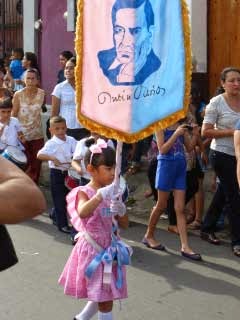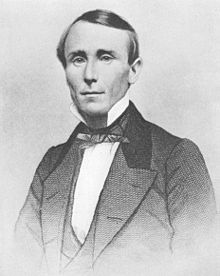Friday morning, León, Nicaragua. My faithful reader
noticed the other day that I haven’t written on this blog in a long time. “Where
have you been?” is his question. As I reflected on this question, it struck me
that the last few months I’ve spent connecting with history.
 To celebrate our 40th
wedding anniversary Peggy and I took a big trip – The Birds and Culture of
China. There we saw many astonishing things from China’s distant and
not-so-distant past. Near Beijing we walked on the Great Wall – the immensity
of it is awe-inspiring. Built a couple thousand years ago, without the benefit
of a single piece of motorized machinery, it winds along rugged ridges from
hilltop to hilltop more than 5,000 miles, a distance much greater than that from
Michigan to Alaska. How did they do that? What was life like for those construction
workers? For the soldiers that manned the remote stretches of wall? Did it keep
the warring barbarians out?
To celebrate our 40th
wedding anniversary Peggy and I took a big trip – The Birds and Culture of
China. There we saw many astonishing things from China’s distant and
not-so-distant past. Near Beijing we walked on the Great Wall – the immensity
of it is awe-inspiring. Built a couple thousand years ago, without the benefit
of a single piece of motorized machinery, it winds along rugged ridges from
hilltop to hilltop more than 5,000 miles, a distance much greater than that from
Michigan to Alaska. How did they do that? What was life like for those construction
workers? For the soldiers that manned the remote stretches of wall? Did it keep
the warring barbarians out?
Near Xian we visited
the Terra Cotta Warriors – life-sized warriors, horses, chariots, archers – an
entire army of 8 thousand or more, each with a unique face. They were made of clay a couple thousand years ago
and buried with the emperor who first united the warring tribes of China. It
was certainly a great and impressive send-off into the next life for him – and I’m
guessing his real army was quite relieved to have been substituted for by the
terra cotta replacements at the last minute.
 What I saw in China,
both ancient and modern, gave me the distinct impression that China doesn’t do
anything on a small scale. When they undertake a public project, it’s not just
big—it’s enormous. One could legitimately ask if China can keep up the great
pace of development it is undergoing today. But in response one would have to
acknowledge that China has a several thousand year history of progress and grand
developments. I had the impression (from high school history?) that in the 19th
and 20th centuries China was a rather backward nation compared to
the western powers. But now I have the impression that China’s seeming
backwardness was just a temporary 2 century interlude in more than 20 centuries
of significant advances in culture, science and technology.
What I saw in China,
both ancient and modern, gave me the distinct impression that China doesn’t do
anything on a small scale. When they undertake a public project, it’s not just
big—it’s enormous. One could legitimately ask if China can keep up the great
pace of development it is undergoing today. But in response one would have to
acknowledge that China has a several thousand year history of progress and grand
developments. I had the impression (from high school history?) that in the 19th
and 20th centuries China was a rather backward nation compared to
the western powers. But now I have the impression that China’s seeming
backwardness was just a temporary 2 century interlude in more than 20 centuries
of significant advances in culture, science and technology.
Of course there were
birds to see in China, too. We saw lots,
including some extremely rare birds. Two
species, Crested Ibis and Siberian Crane, until recently thought to be extinct,
and another, Jankowski’s Bunting, which may become extinct soon. China has some
beautiful forests and nature preserves, but it also has big environmental
problems. Industrial and domestic pollution is widespread and habitat loss is
severe in places. China is certainly not
unique in this respect. God did tell us to be fruitful and multiply, and he
gave us the earth to provide us the things we need to flourish—but we must
remember that God never told us to ravage the earth and destroy it. The world, and everything in it, belongs to
God. We should treat all of creation with care and respect as the valuable
property of another who has entrusted it to us for but a season. It would be a
shame—shame on us—if we continue to wipe out plants, birds, animals, and other
creatures that God gave us to enjoy life in abundance.
Three months after
China we made a short trip to Peru to visit our son and daughter-in-law who
were there for her brief internship. We went straight to the center of ancient
Inca civilization: Cusco, Ollantaytambo, and Machu Picchu. At Machu Picchu I
was again struck by the immensity and craftsmanship of this ancient city, built
high on a mountain to help fend off attacks of wild animals or fierce enemies. It’s not so hard to imagine why they built
the city although it amazes me that they could build it where they did. But why
did they then abandon it suddenly near the time of the Spanish conquest and
after only 150 years or so of occupation? The city was never conquered—it wasn’t
even discovered by outsiders until the early 20th century—so conquest
by Spain is not the answer. At least not directly. Machu Picchu is a place full
of mystery.

At Machu Picchu I
thought about the designers, engineers, inspectors, and construction foremen
who directed construction of the city. How did the designers and engineers
communicate the design specifications to the work crew? They had no written
language. I’m guessing there were no blueprints or design drawings to follow.
Yet when you look closely at the carved stones that comprise the most important
buildings (usually temples), they display an intricate structural design that
was executed with incredible precision. The walls are not made of simple
rectangular blocks of stone, but rather of multi-surfaced complex shapes that
fit together like an intricate 3-D puzzle. The joints between the huge stones
are so tight you cannot slip a knife blade between the stones (no, I didn’t try
that!). And they were all carved by hand without even iron tools for the job. How
did they do that? Looking at Machu Picchu made me reassess my own ideas about
how organized and capable ancient civilizations, like the Incas, must have
been. Surely this was a complex and intelligent society that did simply amazing
things with such tools as they themselves had discovered and made.
After a few weeks
visiting family in the US (connecting with our family history again), we are
now back in our León, Nicaragua home. Here we find that the expected rains of
the season are both late and meager. Consequently, it is unseasonably very hot
and, more significantly, many small farmers are in or near crisis mode for lack
of water. We pray for more rain before it is too late for this season’s crops.
Connecting with history
continues to be our central focus here in León. In just five weeks we begin our
new mini-careers as professors of Nicaraguan history. Of course, before you can teach you must
study. So we are now studying Nicaraguan history ourselves. Nicaragua doesn’t
boast a great center of a powerful ancient civilization, like China or Machu
Picchu (and I wonder why). Instead, the recorded history of Nicaragua seems overwhelmed
by outsiders—beginning with the Spanish conquest, followed shortly thereafter
by 150 years of episode after episode of US involvement and intervention in Nicaragua’s
internal affairs. Understandably, today Nicaragua is still trying to find its
own way after nearly 500 years of excessive foreign influence—which may not be
finished yet.
Well, that’s just a
taste of what we are learning. If you want to know more, sign up for the history
class. There you would join 8 college and university students in a semester abroad
program sponsored by Dordt College in Iowa. The students will be arriving in
country in just 2 weeks, so if you are going to join them, you better pack your
bag soon.




















